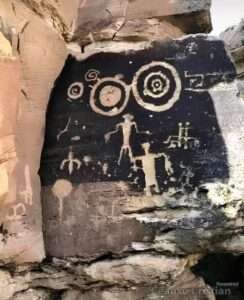Nestled in the heart of Arizona lies the Taawaki (Dewa Park) Petroglyph Site, a mesmerizing testament to the enduring legacy of indigenous cultures. Carved into the ancient stone are depictions of otherworldly beings and mysterious circles, offering a glimpse into a world that dates back thousands of years. Crafted by the skilled hands of the Hopi, Zuni, and ancestral Puebloans, these petroglyphs are not mere artistic expressions; they are bold declarations of profound events, profound spiritual beliefs, and vibrant cultural traditions.
As scholars and archaeologists diligently study this stone canvas, they are not just unraveling the mysteries of the past but also challenging prevailing narratives that have marginalized the intricate societal structures, ceremonial practices, and cosmological beliefs of these remarkable peoples. The petroglyphs at the Taawaki site are more than static images; they are living records that demand attention and respect.

The significance of the Taawaki Petroglyph Site extends beyond its artistic value. These ancient carvings serve as conduits to the past, offering a portal through which we can glimpse the rich tapestry of indigenous history. Each glyph tells a story – a story of resilience, wisdom, and cultural richness that transcends time and speaks to the spirit of the land itself.
While the Taawaki Petroglyph Site stands as a silent witness to the past, it also serves as a reminder of the enduring presence of indigenous cultures in the American Southwest. Through these intricate carvings, we can hear the voices of the ancestors echoing through the ages, reminding us of the importance of honoring and preserving their heritage.
In a world where history is often rewritten and voices are silenced, the Taawaki Petroglyph Site stands as a beacon of truth and resilience. It is a place where the past comes alive, demanding to be heard, understood, and respected. As we continue to explore and interpret the meanings behind these ancient symbols, we are not just uncovering history; we are reconnecting with a legacy that refuses to be forgotten.





